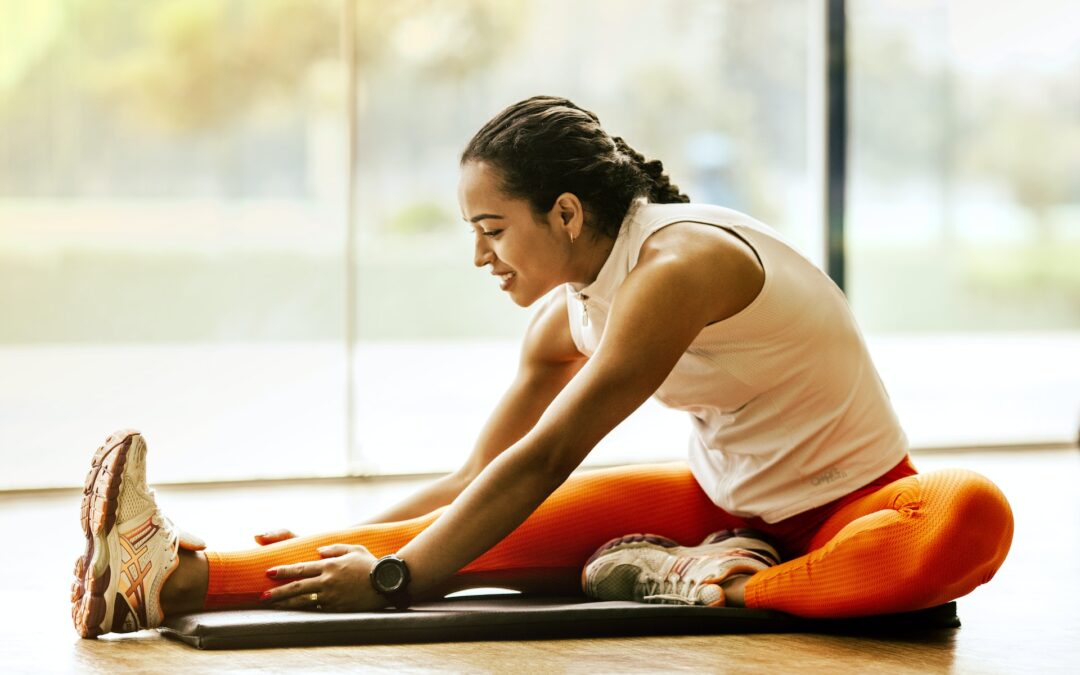In today’s fast-paced world, maintaining an active lifestyle has become paramount for many individuals. Engaging in physical activities not only promotes physical health but also contributes to mental well-being. However, with the pursuit of an active lifestyle comes the risk of injuries, which can hinder progress and cause setbacks. To help you stay on track and minimise the likelihood of injuries, we’ve compiled a comprehensive guide of tips to prevent injuries. Incorporating these practices into your routine can make a world of difference in your fitness journey.
Incorporate Stretching – Warm-Up & Cool-Down
Before diving into your workout, it’s crucial to allocate time for both a warm-up and a cool-down session. These preparatory and concluding exercises significantly contribute to injury prevention. A proper warm-up routine elevates your heart rate, increases blood flow to your muscles, and prepares your body for more intense physical activity. Engage in light aerobic exercises coupled with dynamic stretches to gradually ease your body into motion. A dynamic warm-up not only primes your muscles but also enhances joint lubrication and stimulates the nervous system, thereby improving coordination and reaction time. These benefits are particularly relevant for activities that involve quick movements and changes in direction.
Equally vital is the cool-down session that follows your workout. This phase allows your heart rate to gradually return to its resting state and aids in preventing post-exercise muscle soreness. Engage in static stretches targeting the muscle groups you’ve worked on to enhance flexibility and reduce the risk of muscle tightness. Static stretching during the cool-down helps maintain or improve your range of motion by lengthening the muscle fibres that might have contracted during exercise. It’s important to hold each stretch for about 15-30 seconds without bouncing to avoid overstretching or causing micro-tears in the muscle fibres.
Wear Proper Footwear
The significance of using the appropriate footwear for the activity you’re participating in cannot be overstated when it comes to injury prevention. Different physical activities demand distinct types of footwear that provide the necessary support and cushioning. Ill-fitting or inappropriate footwear can lead to injuries. As an overview, here are the details of which footwear suits various exercises:
Running:
- Features: Cushioning for shock absorption, flexibility, and stability.
- Recommended: Running shoes with a proper fit to your foot type (e.g., neutral, pronation, or supination). Remember, trail running shoes are designed with more grip for uneven terrains, whereas road-running shoes are made for paved surfaces.
Walking:
- Features: Good cushioning, flexible forefoot, and stability.
- Recommended: Walking shoes that offer arch support and a slightly raised heel.
Cross-training:
- Features: Support for lateral movements, cushioning, and stability.
- Recommended: Cross-trainers or training shoes. They’re versatile and suitable for gym workouts, including aerobics, weightlifting, and some court sports.
Basketball:
- Features: Ankle support, shock absorption, and grip.
- Recommended: High-top basketball shoes that protect against ankle rolls and offer grip for quick changes in direction.
Tennis & Racquet Sports:
- Features: Stability for lateral movements, cushioning, and toe reinforcement.
- Recommended: Court shoes with a non-marking sole.
Weightlifting:
- Features: Stable, flat sole for a good ground connection.
- Recommended: Weightlifting shoes or flat-soled shoes (like Converse). These help in maintaining stability during heavy lifts.
Dance:
- Features: Lightweight, flexible, and offering freedom of movement.
- Recommended: Depending on the type, ballet shoes for ballet, jazz shoes for jazz, or dance sneakers for aerobics and Zumba.
Hiking:
- Features: Ankle support, grip, and durability.
- Recommended: Hiking boots or shoes, with water-resistant or waterproof qualities for wet conditions.
Always remember, no matter the sport or exercise, a proper fit is essential. It’s a good idea to shop for exercise shoes in the evening when your feet are largest due to natural swelling. Consult with experts to find the right footwear for your chosen activities, ensuring that they offer adequate arch support and shock absorption.
Use Proper Form
Maintaining proper form during exercises is a fundamental aspect of injury prevention. Incorrect form not only diminishes the effectiveness of your workout but also puts undue stress on your joints and muscles. Enlist the guidance of a certified fitness trainer, particularly when engaging in complex exercises, to ensure that you’re executing each movement correctly. With the right form, you’ll target the intended muscle groups while minimising the risk of strain.
Proper form involves aligning your body correctly to distribute the load evenly across the targeted muscles and joints. This reduces the risk of overloading certain areas and causing imbalances that can lead to injuries.
Gradually Increase Intensity
While enthusiasm is commendable, it’s crucial to avoid the pitfall of overexertion. Gradually increasing the intensity of your workouts allows your body to adapt and strengthen over time, reducing the risk of sudden injuries. Rapidly escalating the intensity of your routine can lead to strains, sprains, or even more severe conditions. Listen to your body’s signals and give it the time it needs to progress safely.
Progressive overload, a principle in exercise science, involves gradually increasing the stress placed on your body to stimulate adaptation and growth. This principle applies not only to weightlifting but also to running, cycling, and bodyweight exercises. Gradual increments in intensity, duration, or resistance ensure that your muscles, tendons, and bones have sufficient time to adjust. By allowing your body to adapt, you’re less likely to experience setbacks due to injuries.
Stay Hydrated
Proper hydration is often underestimated in its role in injury prevention. Water plays a vital role in maintaining the elasticity of muscles and connective tissues. Dehydration can lead to muscle cramps, fatigue, and reduced coordination, all of which increase the likelihood of injuries. Always keep a water bottle on hand and hydrate before, during, and after your workouts to support your body’s optimal functioning.
Hydration is especially critical for activities that induce sweating, as sweat carries away not only water but also essential electrolytes. These electrolytes, including sodium, potassium, and magnesium, play a crucial role in maintaining muscle contractions, nerve function, and overall cellular balance. To stay adequately hydrated, aim to drink water consistently throughout the day and replenish electrolytes as needed, especially during intense or prolonged workouts.
Rest & Recover
In the pursuit of fitness goals, rest days are a crucial component of injury prevention. Overtraining can lead to burnout, weakened immune function, and an elevated risk of injuries. Allow your body time to recover and repair itself between intense sessions. Incorporating activities like pilates or light walks on rest days can promote active recovery. You may also want to consider a remedial massage to assist with any muscle soreness you are experiencing on your rest days.
Rest is the time when your body repairs damaged tissues, replenishes energy stores, and adapts to the physical stress of exercise. It’s during rest that your muscles grow stronger and your cardiovascular system becomes more efficient. Without adequate rest, your body doesn’t have the chance to heal and can become more susceptible to injuries. Remember that recovery isn’t just about physical rest but also includes proper nutrition, sleep, and stress management.
Managing Injuries with Physiotherapy
Even with the utmost precautions, injuries can still occur. In such instances, seeking professional help is essential. Miami Physiotherapy’s approach to rehabilitation aids in restoring mobility, reducing pain, and preventing further injuries. Our physiotherapists evaluate your condition, assign a personalised treatment plan, and guide you through exercises that promote healing and strength. Take the first step towards a healthier and pain-free life by scheduling a consultation with Miami Physio today.


